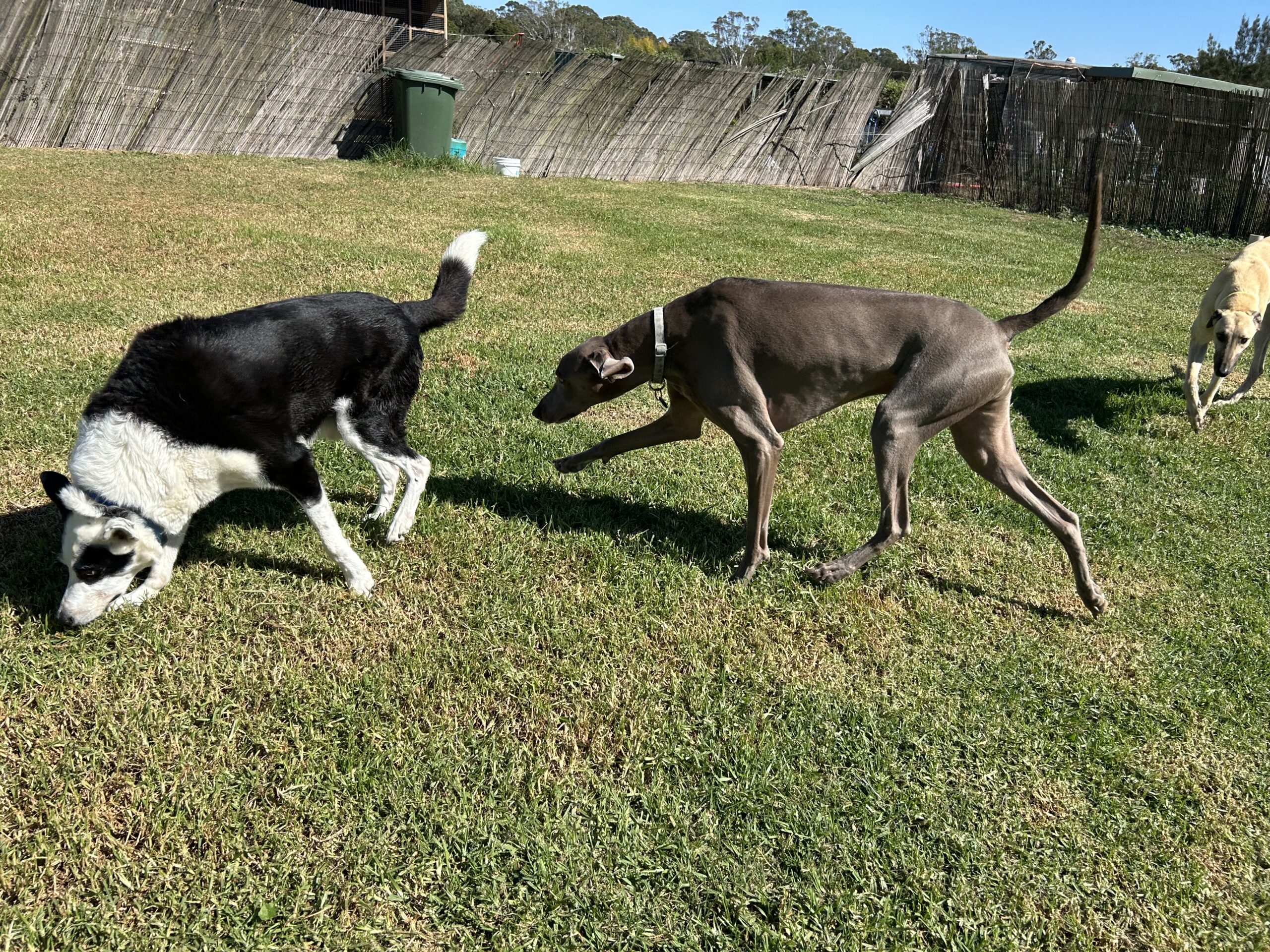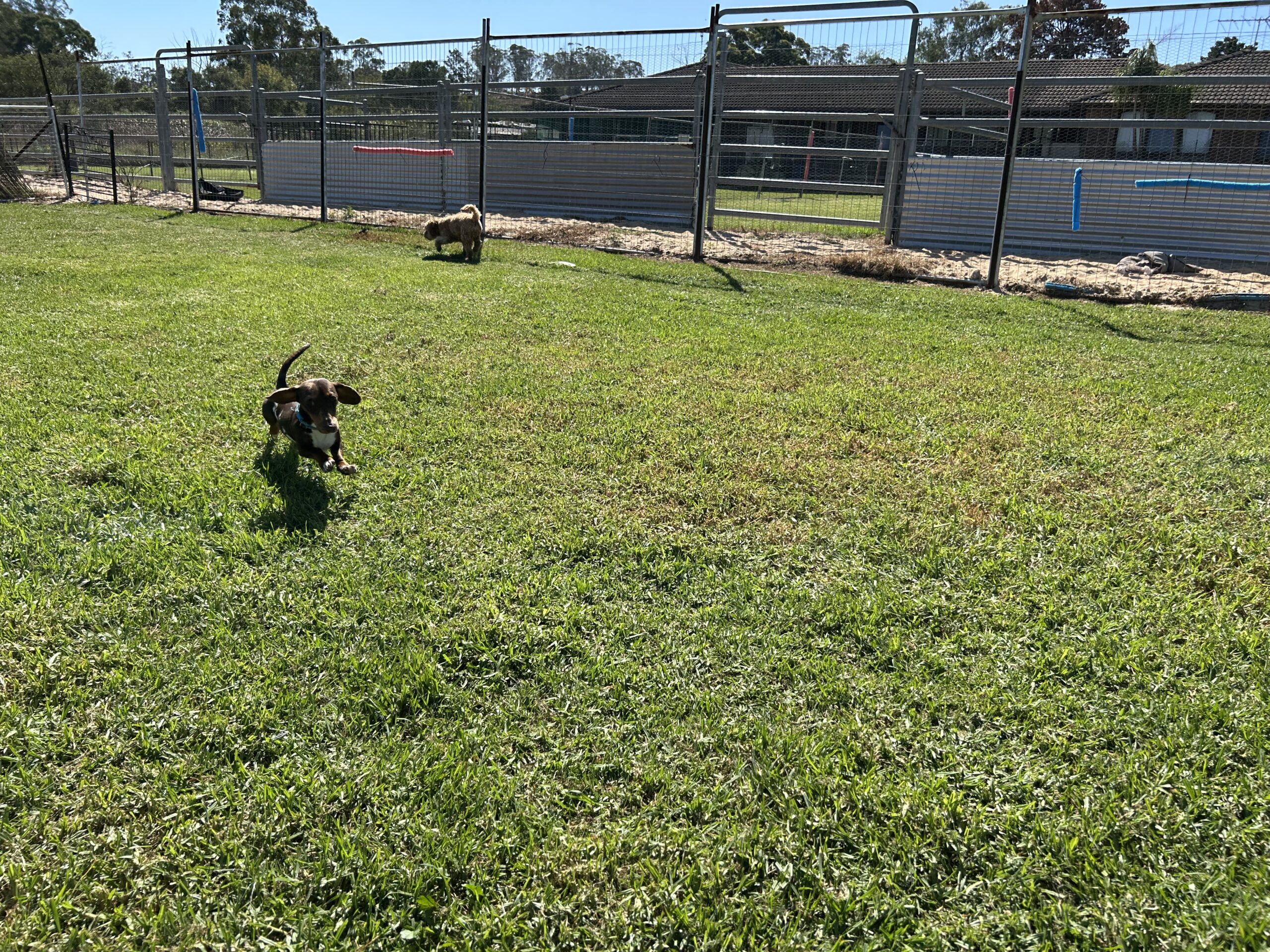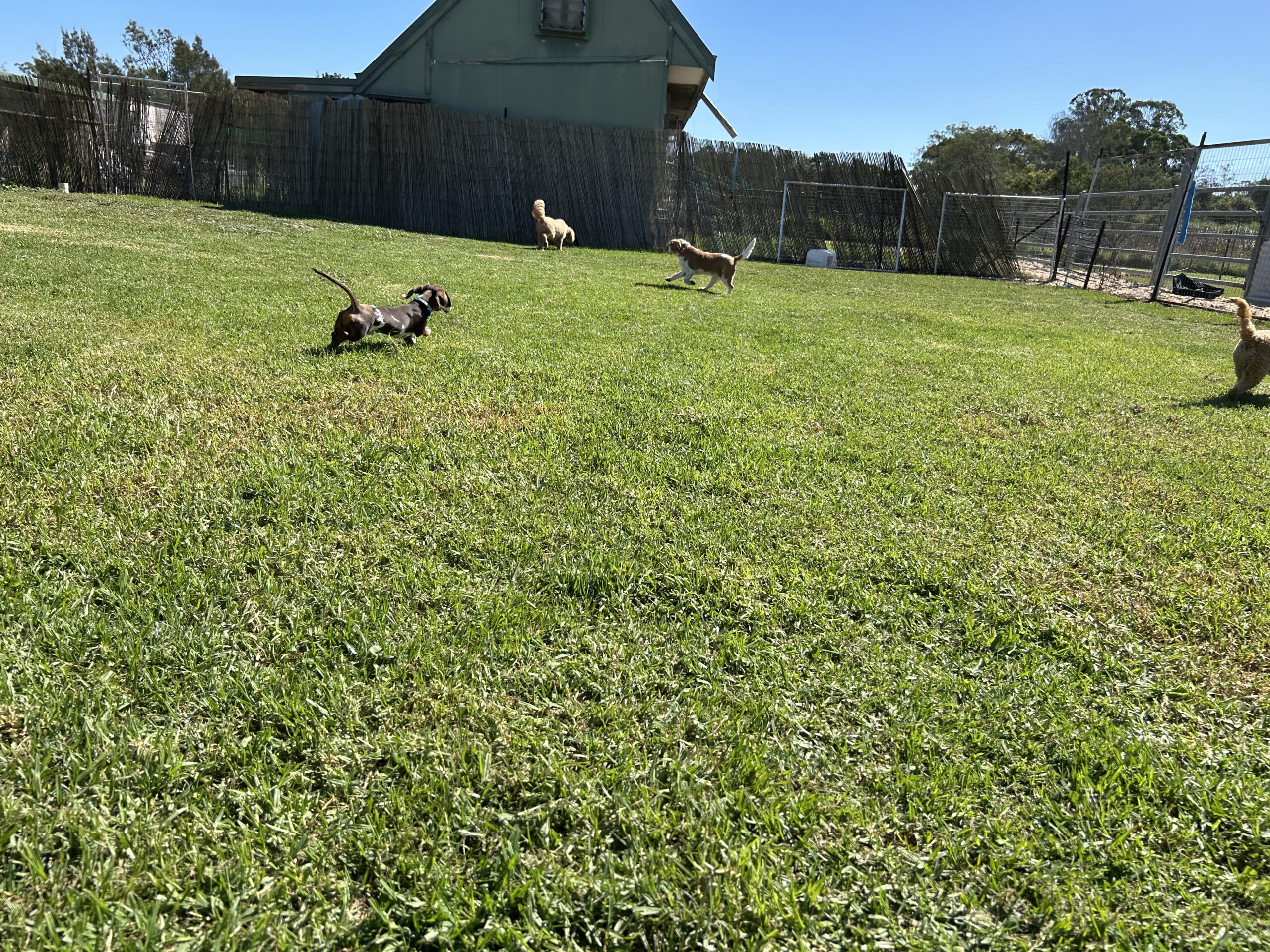Choosing Quality Daycare: Peaceful Selection for Optimal Canine Care
Choosing quality daycare involves systematic evaluation of essential facility, staff, and program criteria that ensure your dog receives exceptional care rather than merely adequate supervision.
Key Takeaways: Essential Evaluation Points for Superior Daycare
| Critical Selection Criteria | Why It Matters |
|---|---|
| Choosing quality daycare includes thorough facility assessment | Physical environment directly impacts safety and enrichment |
| Staff credentials reveal actual expertise beyond mere experience | Knowledge depth determines program quality beyond basics |
| Structured programs indicate deliberate design versus casual care | Intentional activities create superior developmental benefits |
| Assessment protocols demonstrate individualised attention | Personalised approach addresses your dog’s specific needs |
| Specialised knowledge shows genuine expertise versus generalists | Understanding of specific issues creates targeted support |
| Emergency protocols indicate safety prioritisation | Prepared facilities handle unexpected situations effectively |
| Documentation systems demonstrate accountability | Record-keeping reveals attention to detail and continuity |
| Communication practices reveal transparency commitment | Regular updates create collaborative care partnerships |
“The Quality Gap: Is Your Dog Receiving Premium Care or Just Basic Supervision?”
Have you thoroughly investigated the substantial quality differences between available daycare options, or simply selected based on convenience, price, or appealing marketing? Many devoted owners unknowingly choose facilities providing merely adequate supervision when exceptional developmental opportunities exist at truly premium providers—a decision that significantly impacts their dog’s experience and development.
Research from veterinary behavioural science reveals dramatic variability between daycare facilities, with quality differences that extend far beyond obvious factors like cleanliness or staff friendliness. Even more concerning, a comprehensive evaluation by the Australian Association of Professional Dog Trainers found that 67% of facilities claimed “quality care” while offering only basic supervision without structured programming, specialised knowledge, or evidence-based practices.
The implications extend beyond simple value for money to fundamental developmental opportunities. According to certified canine behaviour consultants, the divergence between premium and basic facilities creates significantly different outcomes for dogs attending each type, with quality programs providing developmental benefits rather than mere time occupation. The good news? Understanding key evaluation criteria allows you to identify genuinely exceptional providers offering superior care.
Choosing Quality Daycare Through Systematic Evaluation
Choosing quality daycare facilities requires comprehensive assessment across multiple domains rather than relying on superficial indicators or marketing claims. Unlike casual selection approaches, thorough evaluation implements sophisticated assessment criteria developed by canine care specialists.
“Most owners dramatically underestimate the importance of systematic facility evaluation,” explains Dr. Emma Richardson, veterinary behaviourist. “Surface factors like friendly staff or clean facilities represent mere baseline requirements rather than indicators of genuine quality. Effective choosing quality daycare involves assessing deeper factors including staff credentials, program structure, assessment protocols, and specialised knowledge.”
Premier facilities meeting genuine quality standards demonstrate excellence across key domains:
Facility Design Excellence
Superior physical environments specifically created for canine needs rather than converted spaces—providing purpose-built features supporting optimal care:
- Strategic spatial organization preventing stress through appropriate separation
- Purposeful acoustic management minimizing overstimulation
- Non-slip flooring preventing injuries during play
- Multiple distinct activity zones supporting diverse experiences
- Appropriate temperature regulation ensuring physical comfort
- Thoughtful lighting design reducing stress triggers
- Purpose-built safety features preventing escape or injury
- Indoor-outdoor access providing environmental variety
When evaluating facilities, consider reviewing our comprehensive guide on essential daycare equipment to understand what premium facilities should have in place.
Staff Qualification Depth
Exceptional knowledge extends far beyond basic experience to formal education—creating genuine expertise rather than merely accumulated time:
- Formal certification in canine behaviour beyond basic handling
- Continuing education demonstrating knowledge currency
- Specialised training in specific behavioural domains
- Professional membership in recognised organisations
- Documented mentorship under established experts
- Regular skills assessment ensuring competency maintenance
- Specialisation development focusing expertise areas
- Evidence-based approach rather than personal opinion
Understanding puppy training tips for beginners can help you evaluate whether staff demonstrate genuine expertise when working with younger dogs.
Program Structure Sophistication
Quality programs demonstrate deliberate design rather than casual supervision—providing systematic developmental benefits beyond simple time occupation:
- Comprehensive daily schedules rather than unstructured time
- Intentional activity rotation developing multiple skills
- Balanced activity-rest cycles supporting physiological needs
- Purposeful grouping based on compatibility assessment
- Graduated challenge progressions building capabilities
- Regular program review ensuring continuous improvement
- Specific domain targeting addressing developmental needs
- Individualised adaptations accommodating specific requirements
For more insight into proper programming, explore our article on dog social learning which explains how quality facilities facilitate healthy social development.
Assessment Protocol Rigour
Premium facilities employ thorough evaluation systems—creating genuinely personalised experiences rather than generic approaches:
- Comprehensive intake assessments gathering specific information
- Standardised evaluation tools beyond subjective impression
- Regular reassessment tracking developmental changes
- Documentation systems maintaining consistent records
- Multiple domain evaluation beyond general temperament
- Professional observation protocols ensuring consistency
- Specific compatibility assessment for group integration
- Individual need identification guiding personalised care
“When selecting daycare, these deeper quality indicators reveal genuine excellence,” notes canine care specialist Dr. James Wilson. “Choosing quality daycare involves identifying facilities that demonstrate expertise, structure, and individualisation rather than those providing merely adequate supervision.”
Is Your Current or Potential Daycare Truly Exceptional? Take This Assessment:
- Does the facility have purposefully designed features beyond basic conversion?
- Do staff hold formal certifications in canine behaviour beyond experience?
- Does the program follow structured schedules with intentional activities?
- Are thorough assessment protocols used beyond basic temperament testing?
- Can staff demonstrate specialised knowledge of specific behavioural domains?
If you answered “no” to two or more questions, your current or potential daycare may provide merely adequate care—precisely the quality gap that systematic evaluation addresses when choosing quality daycare providers.
For guidance on what to look for during first time dog daycare visits, review our comprehensive preparation guide.
Specialised Evaluation Techniques for Identifying Premium Providers
Selecting truly exceptional facilities requires sophisticated assessment approaches rather than casual observation. These evaluation techniques reveal deeper quality indicators beyond surface impressions:
Site Visit Observation Protocol
Structured facility evaluation using specific criteria—identifying quality indicators through systematic observation rather than general impressions:
- Staff-to-dog ratio assessment during multiple visit times
- Noise level evaluation during peak activity periods
- Dog body language observation noting stress indicators
- Handler interaction quality assessment beyond quantity
- Group management technique observation
- Emergency equipment verification and location noting
- Spatial design evaluation noting purpose-built features
- Staff communication pattern observation
Understanding daycare safety protocols will help you evaluate whether the facility prioritises safety during your visit.
Documentation Review Assessment
Thorough examination of written materials—revealing organisational rigour beyond verbal claims:
- Program schedule review noting intentional design
- Assessment form evaluation checking comprehensiveness
- Staff credential verification beyond experience claims
- Incident response protocol review checking thoroughness
- Communication system examination noting frequency
- Record-keeping system assessment verifying consistency
- Policy documentation review checking comprehensiveness
- Continuing education verification confirming currency
Staff Interview Evaluation
Structured questioning assessing knowledge depth—identifying genuine expertise beyond surface friendliness:
- Behavioural knowledge assessment through scenario questions
- Specific domain expertise verification beyond generalities
- Management approach inquiry revealing philosophy
- Emergency response knowledge checking preparedness
- Continuing education discussion revealing commitment
- Specialisation identification noting expertise areas
- Professional affiliation verification confirming standards
- Evidence-based practice assessment checking approach
Case Study: The Quality Difference Between Two Seemingly Similar Facilities
Facility A (Basic Care):
Initially appealing due to friendly staff, clean environment, and reasonable pricing, deeper evaluation revealed significant limitations:
- Staff possessed general experience without formal certification
- Daily schedule consisted primarily of open play without structured activities
- Assessment limited to brief temperament observation
- Groups organised primarily by size without compatibility evaluation
- Documentation consisted of basic attendance records only
- Communication limited to problem reporting rather than regular updates
- Emergency protocols undefined beyond basic contact information
- Facility converted from general purpose space without canine-specific design
Facility B (Premium Care):
Demonstrated exceptional quality across all evaluation domains:
- Staff held certified professional dog trainer credentials with behaviour specialisations
- Comprehensive daily schedule alternated structured activities with appropriate rest
- Thorough assessment protocol evaluated multiple behavioural domains
- Sophisticated grouping system based on play style, energy level, and social preferences
- Detailed documentation tracked specific behavioural observations and developments
- Regular communication provided specific updates on developmental progress
- Comprehensive emergency protocols with clearly defined staff responsibilities
- Purpose-built facility designed specifically for optimal canine care
Outcome Difference After Three Months: “The contrast in my dog’s development between facilities was remarkable,” reports owner Michael. “Facility A provided basic supervision that kept him safe but offered little developmental benefit. After switching to Facility B, we observed significant improvements in his impulse control, social skills, and general behaviour. The systematic approach to choosing quality daycare revealed differences that weren’t apparent from casual observation but created dramatically different experiences and outcomes.”
Quality Indicators Visible During Facility Evaluation
Not all quality factors require expert knowledge to identify. During your evaluation when choosing quality daycare, observe these accessible indicators of genuine excellence:
Staff-Dog Interactions
Quality facilities demonstrate sophisticated handling beyond basic control:
- Individualised approaches tailored to specific dogs
- Calm, confident direction rather than chaotic management
- Proactive intervention before situations escalate
- Positive relationship quality beyond mere compliance
- Individual recognition of each dog’s specific needs
- Appropriate tone and body language during interaction
- Consistent boundaries applied without harshness
- Engagement quality showing genuine connection
Facility Environment Design
Superior physical spaces show purposeful design beyond basic functionality:
- Multiple distinct areas serving different functions
- Appropriate sound management preventing echo/amplification
- Thoughtful spatial organisation preventing crowding
- Purpose-built features specifically for canine needs
- Suitable flooring providing traction without abrasion
- Strategic resting areas allowing appropriate withdrawal
- Deliberate sensory management preventing overload
- Hygienic systems exceeding basic cleanliness
Learn more about proper daycare cleaning standards to understand what exceptional hygiene looks like.
Program Implementation Observation
Quality activities demonstrate intentional design beyond mere occupation:
- Purposeful structure rather than extended free play
- Appropriate activity-rest cycling throughout day
- Meaningful engagement rather than simple supervision
- Varied experiences developing different skills
- Individual adaptations accommodating specific needs
- Appropriate energy management preventing overarousal
- Meaningful social facilitation beyond mere presence
- Developmental focus beyond time occupation
Quality Comparison: Basic Supervision vs. Premium Care
| Quality Domain | Basic Facility Characteristics | Premium Facility Excellence |
|---|---|---|
| Staff credentials | General experience without formal training | Certified professionals with specialised education |
| Program structure | Primarily unstructured time with basic supervision | Comprehensive schedule with intentional activities |
| Assessment protocols | Simple temperament testing or observation | Multi-domain evaluation using standardised tools |
| Grouping approach | Size-based or convenience grouping | Compatibility matching using multiple criteria |
| Facility design | Converted space with basic functionality | Purpose-built environment with canine-specific features |
| Documentation systems | Minimal record-keeping limited to basics | Comprehensive tracking of development and behaviour |
| Communication practices | Problem-focused reporting when issues arise | Regular updates providing specific developmental information |
| Emergency preparedness | Basic contact information without protocols | Comprehensive response systems with defined roles |
Long-Term Benefits of Selecting Genuinely Superior Daycare
Choosing quality daycare through systematic evaluation creates enduring advantages that extend throughout your dog’s development. Recent analysis from the University of Queensland’s Companion Animal Studies Department revealed that dogs attending genuinely premium facilities showed significantly enhanced behavioural development, better social skills, and improved emotional regulation compared to those attending basic supervision facilities.
“We now understand that genuine quality differences create substantial outcome variations,” explains canine development specialist Dr. Robert Thompson. “The care quality selected through proper evaluation fundamentally impacts how dogs develop behaviourally, socially, and emotionally during their attendance period.”
Evidence-based benefits of selecting premium providers include:
- Enhanced behavioural development beyond basic socialization
- Superior impulse control development through structured programs
- Improved emotional regulation through appropriate facilitation
- Better social skill development via professional guidance
- Enhanced environmental confidence through varied experiences
- Reduced stress through appropriate management
- Improved overall wellbeing through comprehensive care
- Greater developmental progress through intentional activities
These quality benefits accumulate over time, making the evaluation effort when choosing quality daycare a worthwhile investment in your dog’s development.
Explore our comprehensive guide on benefits of doggy daycare to understand the full scope of advantages quality care provides.
How Different Dog Types Benefit from Quality-Focused Selection
Choosing quality daycare becomes even more critical for dogs with specific needs or characteristics. Different dog types particularly benefit from the enhanced care premium facilities provide:
Sensitive/Anxious Dogs
Dogs with heightened sensitivity or anxiety require the sophisticated management premium facilities provide—creating appropriate experiences that build confidence rather than overwhelming their coping capacity.
For dogs with specific emotional needs, review our specialized guide on anxious dog boarding to understand how quality facilities accommodate sensitive temperaments.
High-Energy/Working Breeds
Active breeds with substantial physical and mental stimulation needs benefit from structured programs exceeding basic play—providing the comprehensive outlet these breeds require for balanced development.
Socially Developing Dogs
Dogs building or refining social skills need the professional facilitation quality facilities offer—providing appropriate guidance rather than the sink-or-swim approach basic facilities often employ.
Special Needs Canines
Dogs with specific requirements benefit from the individualised adaptations premium facilities implement—accommodating particular needs rather than applying one-size-fits-all approaches.
Learn more about special needs dog boarding to understand how quality facilities address unique requirements.
Quality Daycare Selection Evaluation Checklist
When choosing quality daycare, use this evidence-based checklist to evaluate potential providers systematically:
- [ ] Staff credentials exceeding experience alone to include formal education
- [ ] Facility design showing purpose-built features beyond conversion
- [ ] Program structure demonstrating intentional activities beyond supervision
- [ ] Assessment protocols using standardised tools beyond casual observation
- [ ] Grouping systems employing compatibility matching beyond size
- [ ] Documentation practices maintaining comprehensive records beyond basics
- [ ] Communication systems providing regular updates beyond problem reporting
- [ ] Emergency protocols establishing comprehensive procedures beyond contacts
Critical Questions When Choosing Quality Daycare
When interviewing potential providers, ask these revealing questions to assess their quality beyond marketing claims:
- “What specific certifications do your staff hold beyond general experience?”
- “Can you describe your daily program structure and its developmental purpose?”
- “What assessment protocols do you use beyond basic temperament testing?”
- “How do you determine appropriate playgroup placement beyond size?”
- “What documentation systems track my dog’s progress and development?”
- “How will you communicate about my dog’s experience beyond problems?”
- “What emergency protocols have you established beyond basic contacts?”
- “What specific facility features were designed purposefully for canine needs?”
The facility’s ability to provide substantive, detailed responses reveals their true quality level versus facilities offering merely adequate supervision.
For additional guidance on facility selection, explore our comprehensive dog boarding guide which covers evaluation criteria in detail.
Conclusion: Transform Your Dog’s Experience Through Quality-Focused Selection
Choosing quality daycare through systematic evaluation creates significantly different experiences and outcomes compared to casual selection based on convenience or marketing. By assessing facilities using specific quality criteria, you can identify genuinely exceptional providers offering superior care beyond basic supervision.
Each quality factor contributes to your dog’s overall experience and development. The cumulative effect of these factors creates a premium care environment—transforming daycare from simple time occupation to valuable developmental opportunity.
“When we examine the quality evidence,” notes Dr. Jessica Moore, veterinary behaviourist, “the conclusion is clear: systematic evaluation when choosing quality daycare represents one of the most valuable investments in your dog’s care experience, creating substantially different outcomes through the identification of truly exceptional providers.”
Your dog deserves care that exceeds mere adequacy to provide genuine excellence. Implement thorough evaluation techniques to discover how choosing quality daycare can transform your dog’s experience through superior care selection.
External Links:
- Canine Boarding Lodge
- Mobile Dog Grooming Services
- Canine Glamour Facebook
- Canine Glamour Instagram
- Canine Glamour TikTok
- Canine Boarding Lodge Facebook
Follow for more: For more grooming tips visit: FB: Canine glamour Instagram: Canine glamour TikTok: Canine Glamour For more boarding tips visit: FB: Canine boarding lodge





